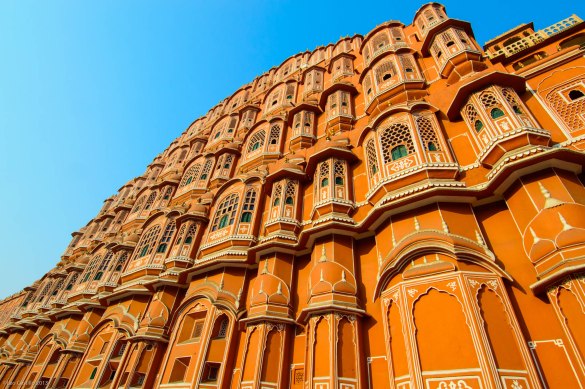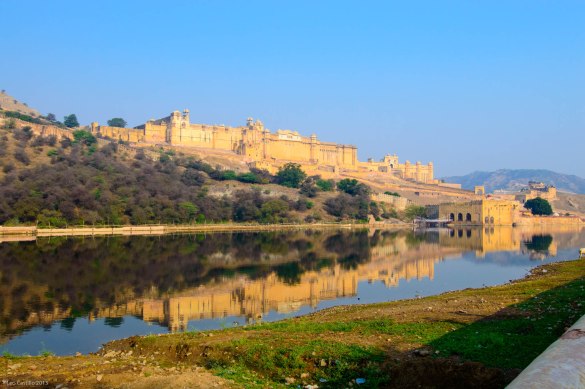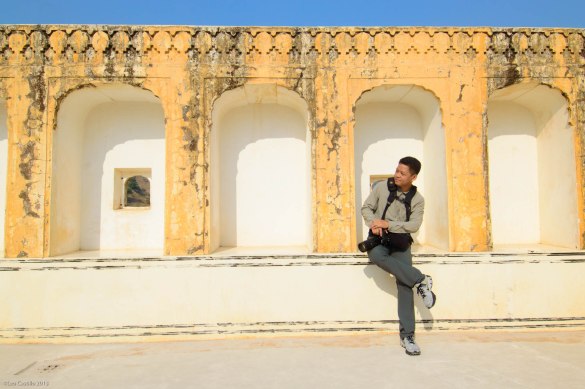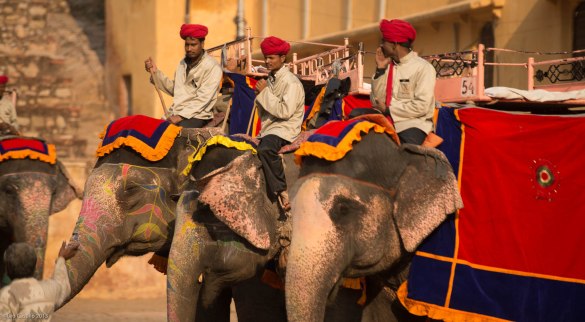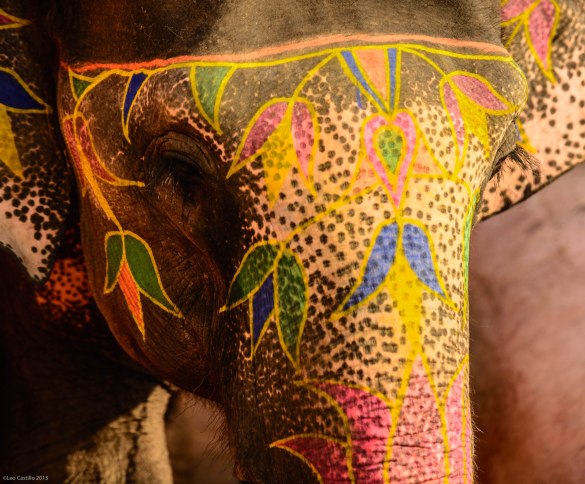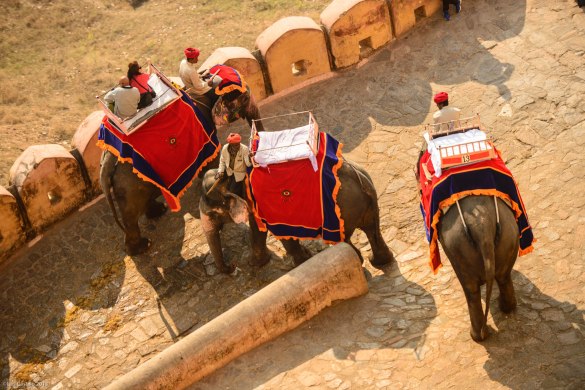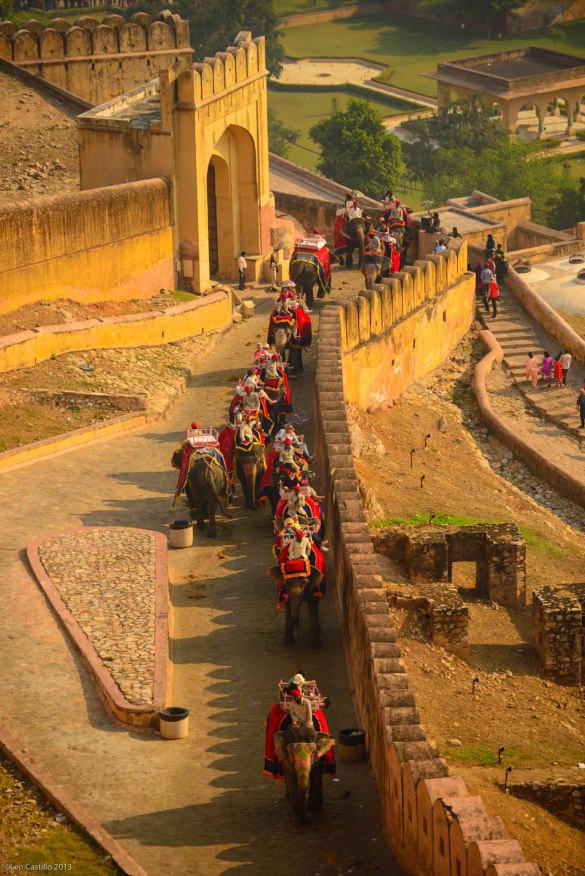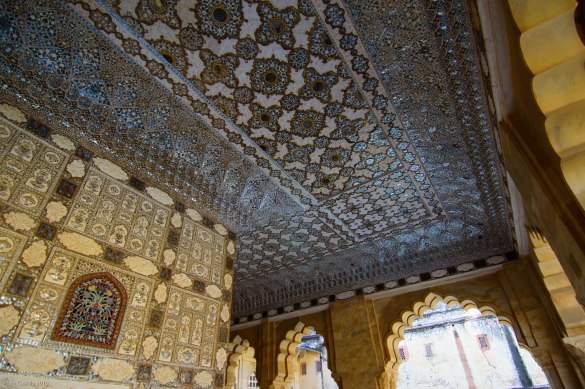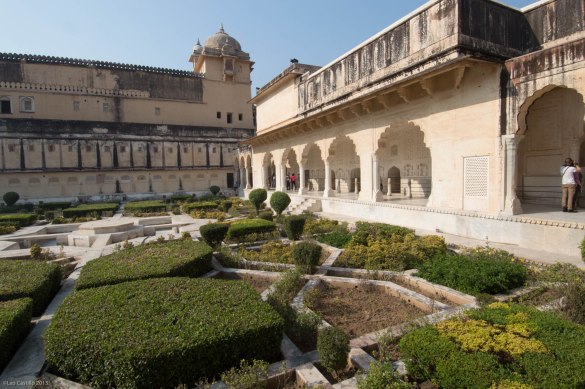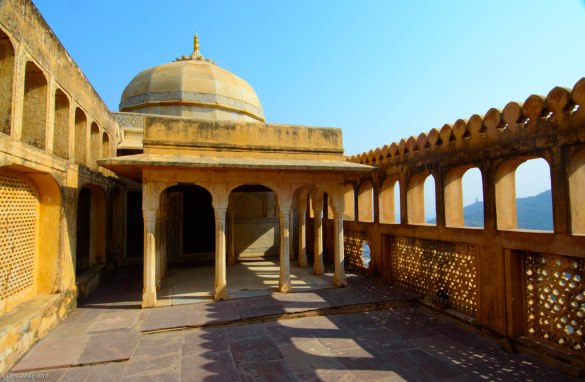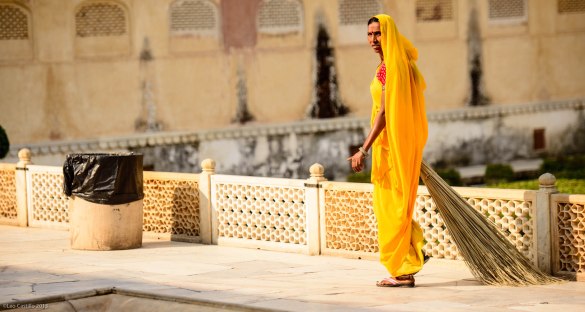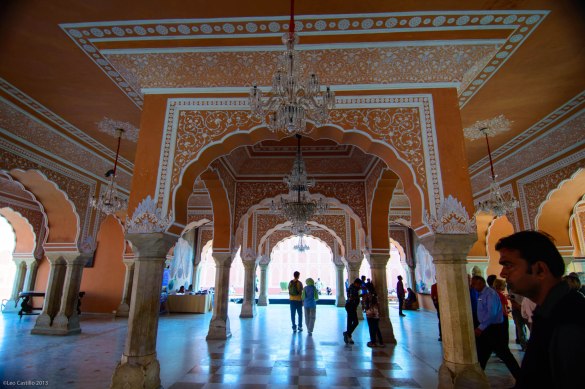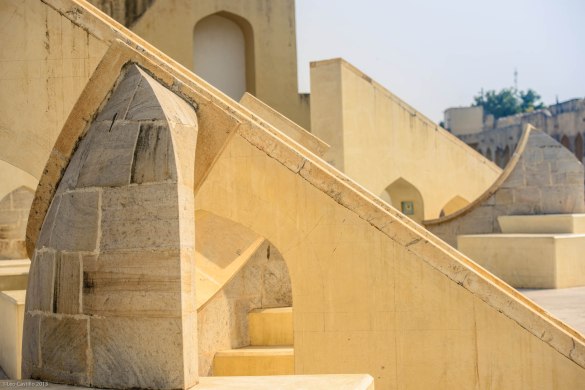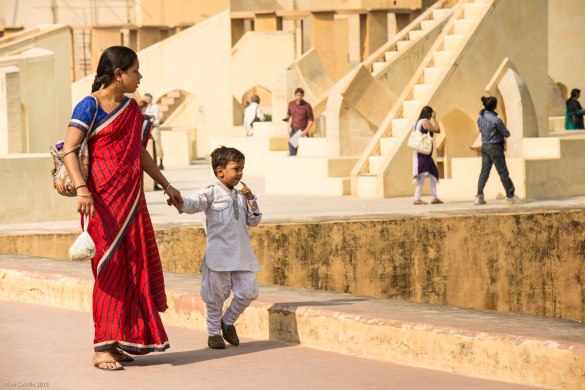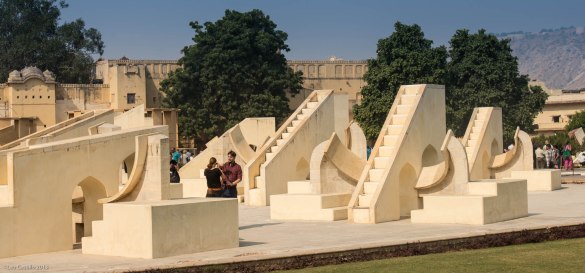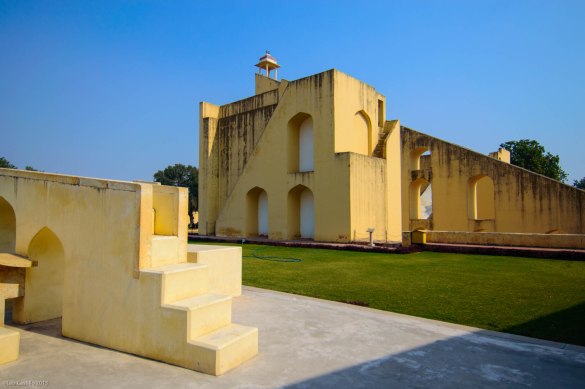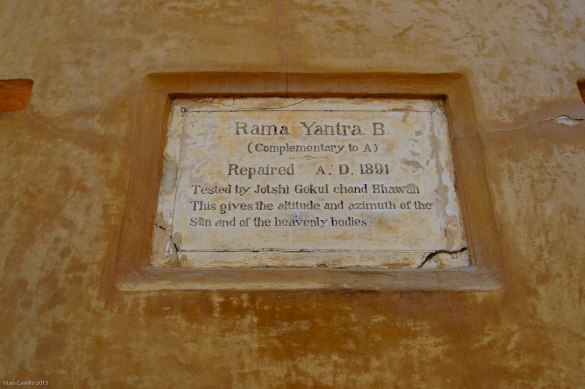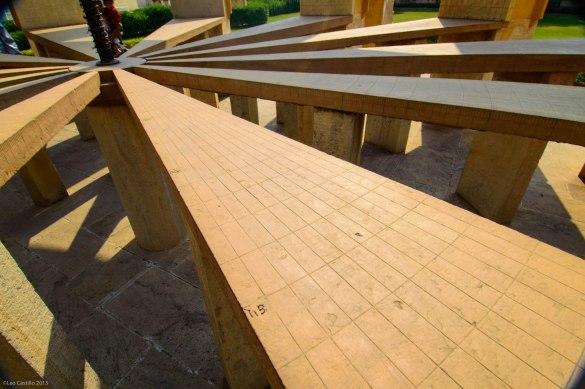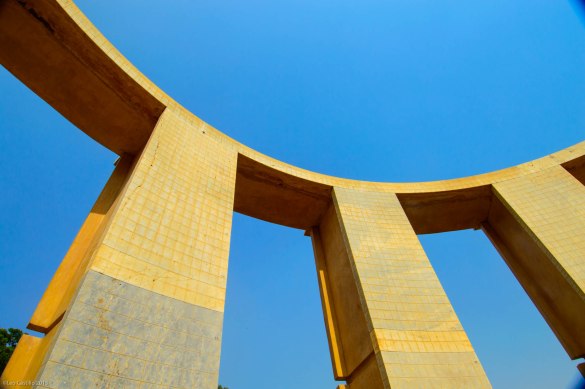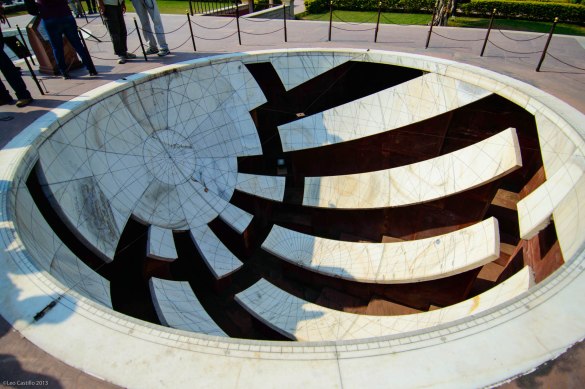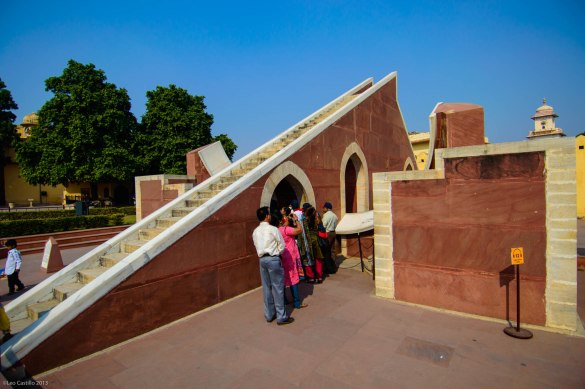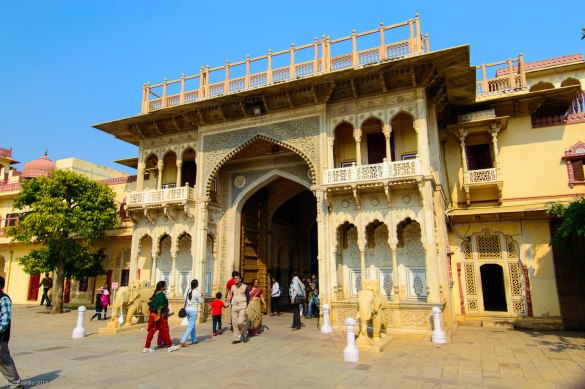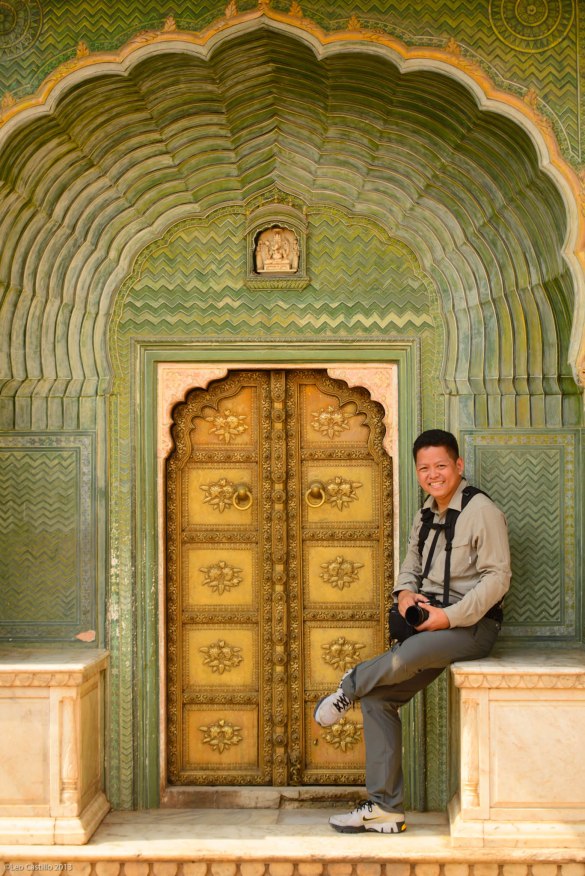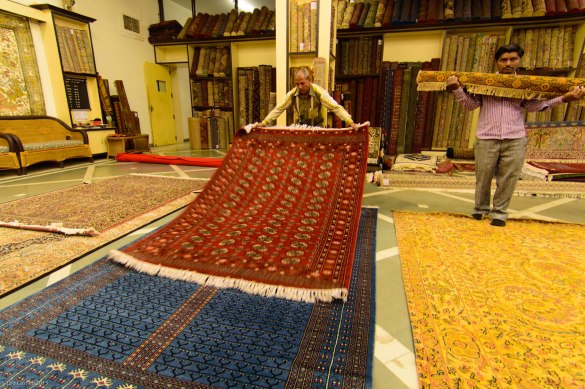Editor’s Note: #OneYearLater continues! This article is pretty much perfect, so it stays the way it is. I wrote this in Panama on my 4 hour layover to Ecuador. Come and enjoy it again!
It’s Day 3 and we’re off to explore Jaipur. My guide Mr Singh and driver Ajay picks me up from Radoli House.
First off is a quick photo pop at the Hawa Mahal, also known as “Palace of the Winds”. Royal Ladies during the olden times were not allowed to meet the commoners, and can only peer from the windows, thus the unique honeycomb look of the wall.
To be honest, there’s nothing much to see here. It’s really just a big facade, sort of like Macau’s Ruin of St Paul. You see it, you admire the architecture a bit, you take some photos and you’re done. It’s cool, but that’s about it, there’s really not much to see. When I was writing this article, I actually almost forgot we went here, until I looked at the photos again. We moved on quickly.
We headed for the Amber Fort. Now this place was WAY more impressive!
The Amber Fort (or sometimes called as Amer Fort) was the home of the Rajput Maharajahs, rulers of Rajasthan (one of the states that eventually formed India). It was built and continuously renovated by the royals for 700 years.
We had amazing light that day. From outside the Amber Fort looks fantastic. It looked like we’ll have a lot of photo opportunities that day, and it was a good sign for the rest of the world tour.
I was very prepared for this shoot. In case you were wondering, here was the gear I was carrying:
- a Nikon D610 (made it just in time! Thank you Rica Tiglao)
- a Nikon D3200
- a 70-200/2.8 lens
- a 12-24/4 lens (thank you Ian Paredes!)
- a 50/1.4 lens
- about 256GB worth of SD cards (8 x 32GB)
- a Black Rapid DR-1 Double Harness (thank you Beyond the Box!) to carry both DSLRs.
Let me pause a bit and talk about the Black Rapid. If you’ve ever carried a DSLR, you know it’s heavy, and takes a toll on your neck and shoulders. What more two DSLRs?
That’s where the Black Rapid DR-1 comes in. You won’t believe how “lightweight” 2 DSLRs feel, as the harness distributes the weight on your shoulders.. I discovered the joy of using two DSLRs back when I was in Jakarta but it was a pain carrying both. With an ultra wide angle on my side and a telephoto on my other side, the Black Rapid really made me I forget they’re even there. I could have both DSLRs on me practically the whole day no problem, you’ll notice I’m wearing them in practically every shot. Can’t recommend them highly enough.
Anyway, We stopped off to take some pictures from afar, and we bumped into a few snake charmers (obviously out there there catch the tourists), but it was too rich a photo op not to take!
The best way to enter the Amber Fort is via an elephant ride. The line was long and it looked like an hours wait. We were considering going straight up to the fort, until my tour guide was able to do some magic to, shall we say, make the line shorter. 🙂
Wow…. so glad my guide made it happen! Going up via elephant is really the right way to do it, to give you the full experience. I have a few photos of myself on the elephant but they were in prints taken by another photographer. I’ll have it scanned and posted when I get back to Manila.
So what’s inside the Amber Fort? It’s quite a regal place. In many ways it reminds me of a bigger grander Versailles. Most people don’t know this but there was a time when India was the richest country in the world! Viewing the grandeur of the Amber Fort really helped it sink in.
After about an hour or two at the Amber Fort, we went to see something that I found truly different and unique…. the Jantar Mantar.
In my more than 30 years of traveling the world (I started young) I have never seen anything like it. The Jantar Mantar is an actual time and space observatory, not using what know as “technological instruments” like telescopes or spectrometers, but with huge stone, wood, and metal structures with unusual shapes, angles, and curves that are actually designed to measure the heavens.
Each structure was an astronomical instrument with different functions, to measure time, track stars, even predict eclipses. This also is the basis for most of astrology today, as they find out where the sun is in relation to the stars.
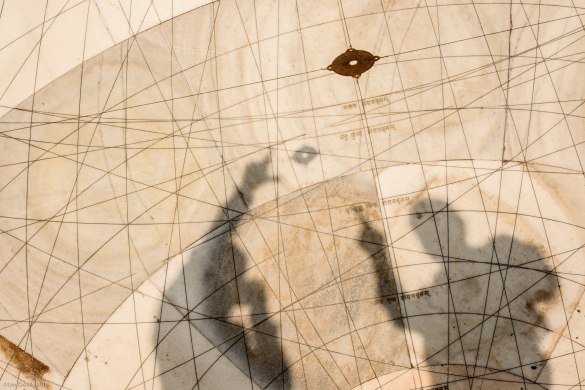
The Steel Disk represents the Sun. Where the shadow falls actually indicates in what constellation the sun is in. This month it was in Scorpio.
Hindus don’t get as much credit on their contribution to science as they should. I would imagine that when people think of India, they think of Bollywood, Sultans, and Call Center Agents, not scientists and innovators like Da Vinci or Galileo. As an example, people forget that the numbers we use today (one, two, three, etc) actually comes from India.
Eventually we go to another popular sight, the City Palace. There’s a courtyard here which has four famous gates, representing the four season (spring, summer, autumn, and winter). Yet more intriguing architecture.

Detail on the most popular of the season entrances: The Summer Gate, with India’s national bird, the peacock. Hard to get a clean full shot of this gate since everyone wanted their photo here!
For me however, the most interesting part part of the City Palace is the armoury, which shows various weapons used in India from the different empires, all the way to the British. You’ll see some exotic things like swords that can fire bullets (!). Unfortunately no photography was allowed inside the armoury.
Finally, we got the chance to look at how Indian Rugs are made. It’s actually quite a a lot of skill and craft required to make one. They use only the best wool and silk and all of it is woven by hand… it takes weeks to make one, months for a gigantic one. No wonder a large silk rug would cost close to 8,000 dollars! Of course they tried to convince me to buy one but it’s way beyond my budget.
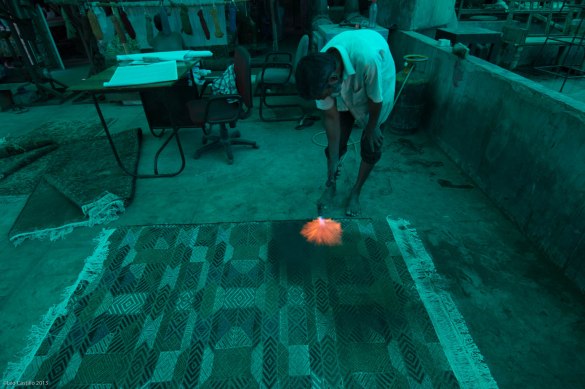
They show that it’s a real rug by burning it. A synthetic rug will melt. A real rug will turn black for a moment but when you wipe the ash away, the real colours will reappear.
And so, Day 3 was done! My first real exploration of Jaipur was a success.
Tomorrow we leave Jaipur and head to the next point of India’s Golden Triangle: AGRA! Can’t wait to see what’s next.
Leo
